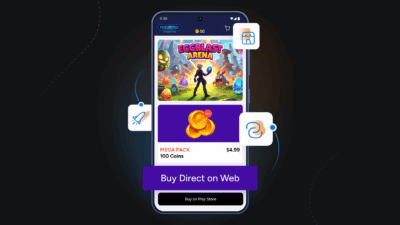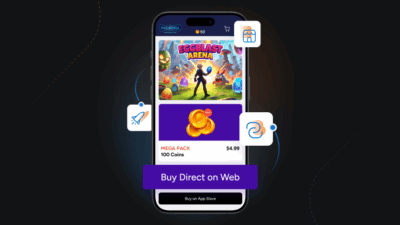Think that your checkout experience is up to scratch? Think again.
There is a reason why customers are abandoning their carts at your checkout and not completing their transactions. A lot of the time, an online checkout just isn’t optimized to boost sales.
In simple terms, your checkout touchpoints didn’t live up to what your customers expected.
It might be your payment options, your billing process, or just how the overall visual experience of your checkout itself. However, these checkout “touchpoints” can be optimized to improve your customer’s experience and boost your sales.
In this piece, we’re going to take an in-depth look at:
- What are touchpoints, and why are they important?
- How touchpoints can affect a customer’s buying decision
- 4 ways to optimize your checkout touchpoints to boost sales
Ready to boost those sales?
What are touchpoints, and why are they important?
Before we go too far into touchpoints, what exactly are they?
SurveyMonkey describes customer touchpoints as “any time a potential customer or customer comes in contact with your brand–before, during, or after they purchase something from you.”
You might be thinking touchpoints are a blog post or a sales call, right? In reality, there are numerous touchpoints a customer hits before they make a buying decision. If we plot these on a customer journey map, it can quickly turn into this:
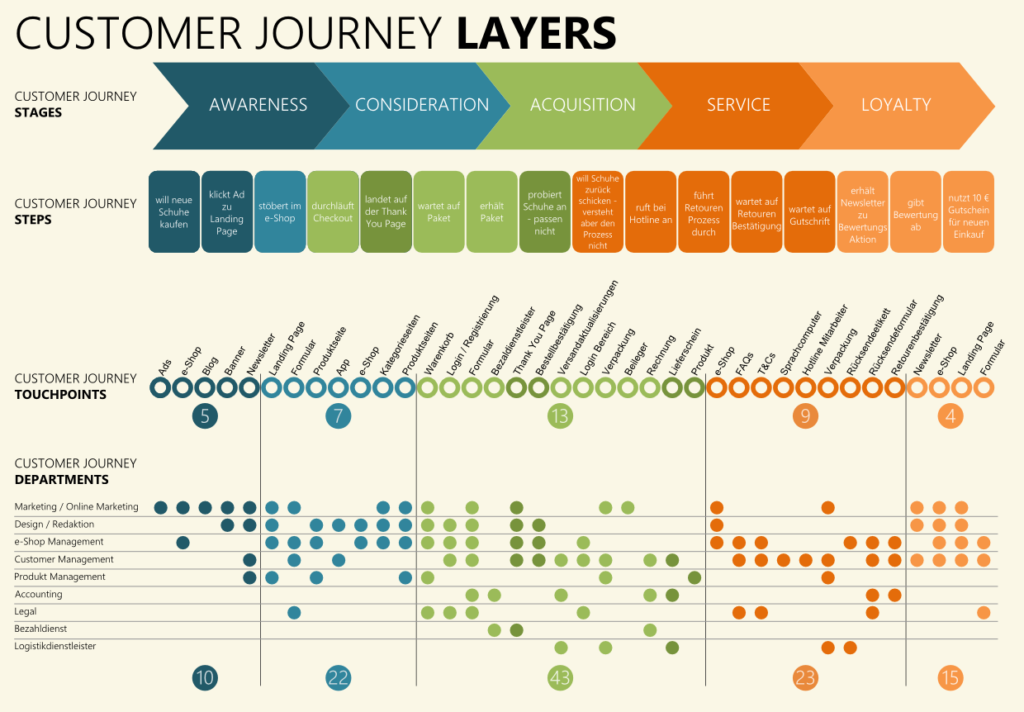
And before a site visitor turns into a customer, each of these touchpoints needs to be optimized to drive a sale. When it comes to your checkout touchpoints, these are when a customer interacts with their shopping cart, checkout page, or your payment portal, among others.
If they don’t have a good experience with just one of these touchpoints, it can lead to an abandoned cart. This is why you need to keep checkout touchpoints in mind and what your customers expect when you’re building your checkout.
But how exactly do touchpoints influence a customer’s buying decision?
How Touchpoints Can Affect a Customer’s Buying Decision
As Brian Solis explains in his book, X: The Experience When Business Meets Design, experiences are now more important than the products customers are buying.
“In fact, experiences are products,” he says.
“People increasingly share their experiences with companies and products in our connected economy, and we can either be active participants in creating and nurturing desired experiences or spend more and more time trying to react or make up for bad experiences.”
When it comes to customer expectations, it’s important to remember that a customer’s buying journey isn’t as straightforward as we imagine it to be. Most of the time, it goes like this:
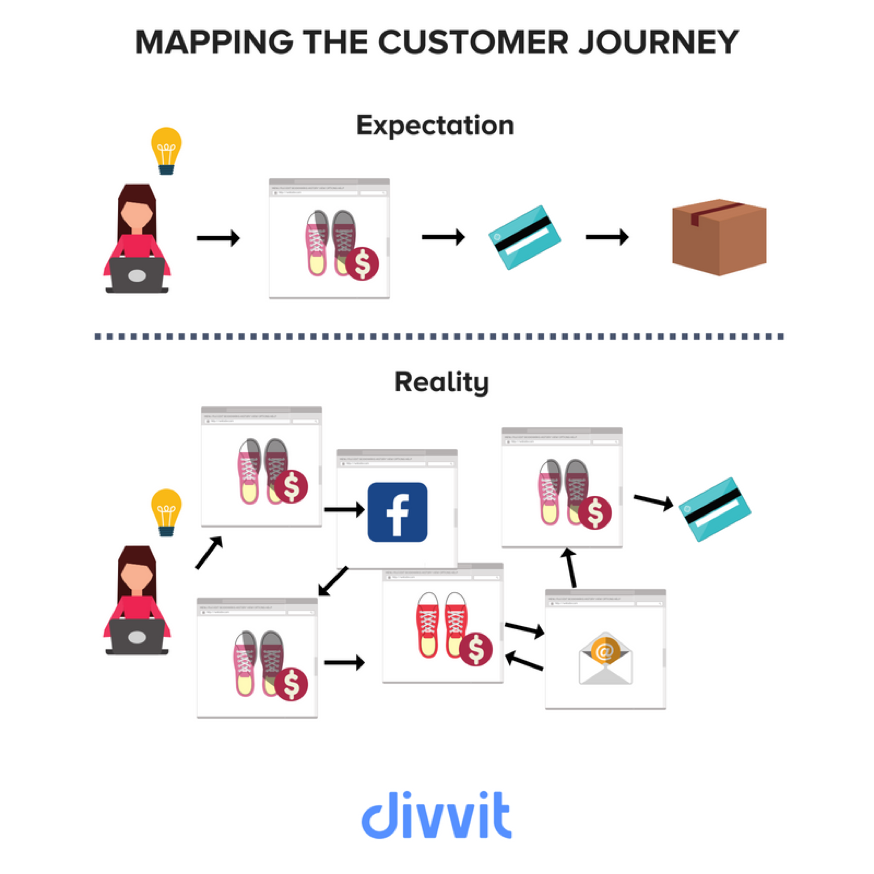
This is where your website data is important. Your analytics will show you exactly how your customers are behaving at each step of their buying journey. And, customers like it when their buying experience is personalized. Marketing Dive found 48% of shoppers have left a brand’s website and made a purchase from a competitor because of a poorly personalized experience.
So, how do you track what your customers like, and what they don’t?
The answer is through your checkout KPIs. Taking a closer look into your website data can help you track and measure at which point customers are abandoning their purchase, so you can pinpoint what parts of your checkout need improving.
Let’s take a look at the most common checkout touchpoints that influence a customer’s buying decision, and how you can improve them.
4 Ways to Optimize Your Checkout Touchpoints to Boost Sales
1. Improve Your Checkout Process
Did you know that 23% of customers will abandon their cart if they can’t calculate what their total order will end up costing?
Making your overall checkout process as clear and transparent as possible should be the first touchpoint you look at optimizing. That means if delivery dates, shipping costs, and return policies should all be clearly communicated to the customer when they’re in your checkout area.
An optimized checkout will do all of this—plus more. There are a lot of other small tweaks you can make to your checkout to make a positive impact on your customers like:
- Placing trust badges of your payment processing options to let the customers know its safe
- Eliminate any friction in the checkout process, like asking for unnecessary information from the customer to complete their transaction
Pro-tip: Making your checkout more secure can boost your customer’s checkout experience. A study by Baymard suggests using SSL certificates, incorporating trust seals and padlocks, and making the credit card area stand out with unique shading are all small touches you can make to improve your checkout experience with customers.
2. Use a Branded Checkout
Using a branded checkout can also help you build trust at the checkout and reduce cart abandonment.
They can automatically update checkout fields like the language, currency, taxes, and pricing based on the location of your customers. Plus, they are made to look like your store and can be created with your branding, which builds trust amongst your customers. By using a provider like FastSpring, you can build a custom checkout based on whatever customer information matters most for your company, but more importantly—allow your customers to checkout easier.
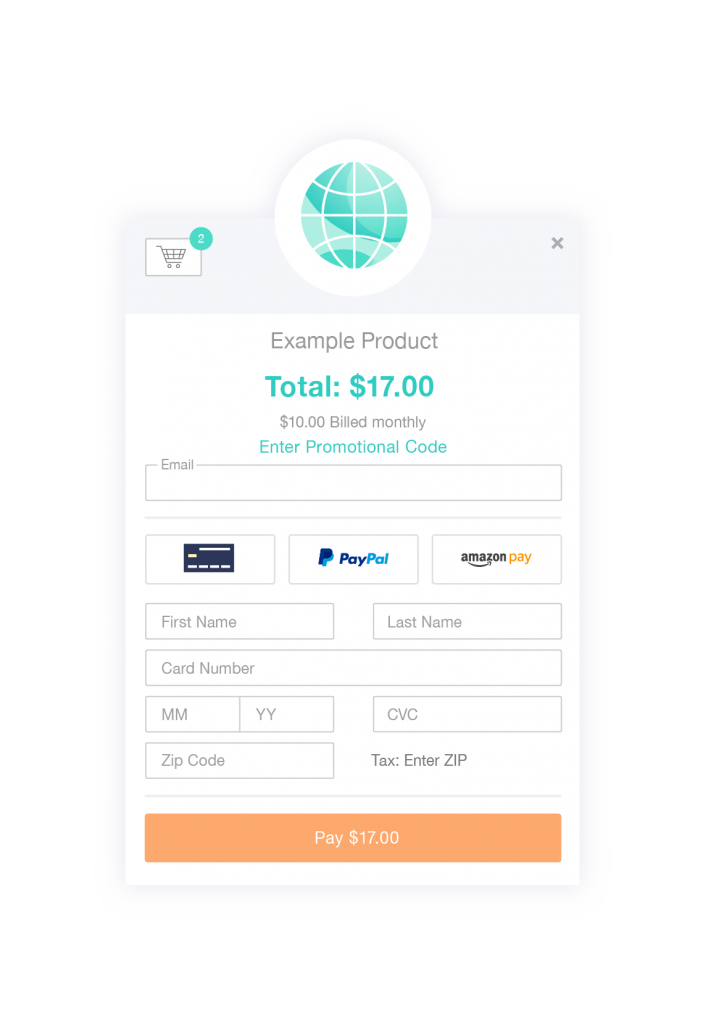
An example of a branded checkout using FastSpring
All of this optimizes the checkout touchpoint and makes your checkout flow as frictionless as possible for customers.
Pro-tip: Cut out any tedious information fields at your checkout. While you must get any information from your customers like shipping or recurring debit details, you don’t need to know everything like birth dates. Limit your checkout fields to the bare minimum and eliminate any that will add friction to the transaction.
3. Look at Your Payment Processing Options
It’s time to start thinking of your customer’s experience at your online checkout the same way as if they’re purchasing from a brick and mortar store.
What payment options do customers now expect to be available for them? If they’re using to paying for items using ApplePay, for example, and your store doesn’t support it, then it’s going to cause a problem. That’s why taking a look at what payment processing options your store has is important to optimizing your checkout touchpoints. By not offering your customers their preferred payment option, you’re essentially telling them to shop somewhere else. And they will.
The best way to optimize your payment processing touchpoint is to support as many gateways as makes financial sense for your business. For example, using a full-service provider like FastSpring can help you increase conversions by up to 30% when you offer localized payment options. Using FastSpring, you’ll be able to accept global payment methods like Amazon Pay, GiroPay, Wire Transfers, and Amazon Pay without having to set up a merchant account.
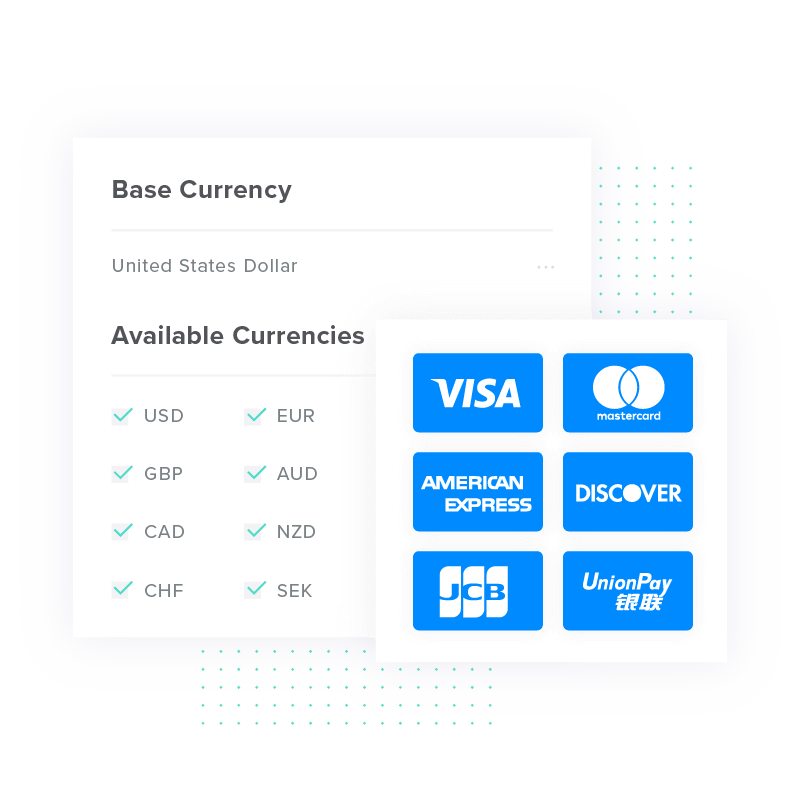
An example of payment options using FastSpring
The more variety in your payment options, the more chance you have of having an option that perfectly suits your customer. And a happier customer is going to be more enticed to buy. It’s that simple.
4. Make Sure Your Checkout is Optimized for Mobile
How mobile-friendly is your checkout experience?
79% of smartphone users have made a purchase on their phones within the last 6 months. So, if your checkout isn’t optimized for mobile, you’re losing out on a big chunk of shoppers.
The best way to optimize the checkout touchpoint for mobile is to make it as easy as possible for customers to complete their transactions on their chosen device. A study by Nielsen Norman Group found providing quick access to a customer’s cart is one of the best ways you can optimize your mobile checkouts.
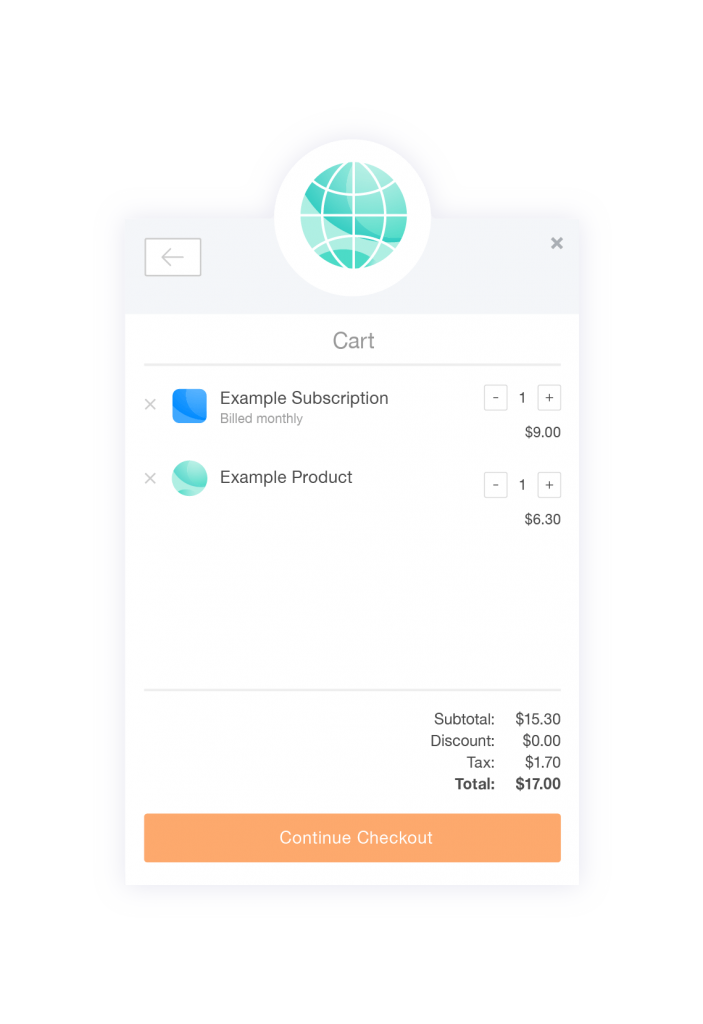
Example of FastSpring’s mobile checkout
Creating the best visual experience for your customers, whether they’re on the mobile or their desktop, is one of the easiest ways to optimize your checkout touchpoints.
Wrapping Up
Small optimization touches during your checkout process can make a massive difference to your customer’s buying experience.
When it comes to optimizing your checkout touchpoints, always keep in mind that the end goal is to make the process as easy and seamless as possible for your customers. No matter if they want to pay with a certain payment gateway, or they’re shopping on their mobile, put yourself in your customer’s shoes and predict what they might be expecting.
Whether you have the tech skills to boost your checkout experience, or you use a full-service provider, optimizing even the smallest touchpoints can result in a big boost in your overall sales.






